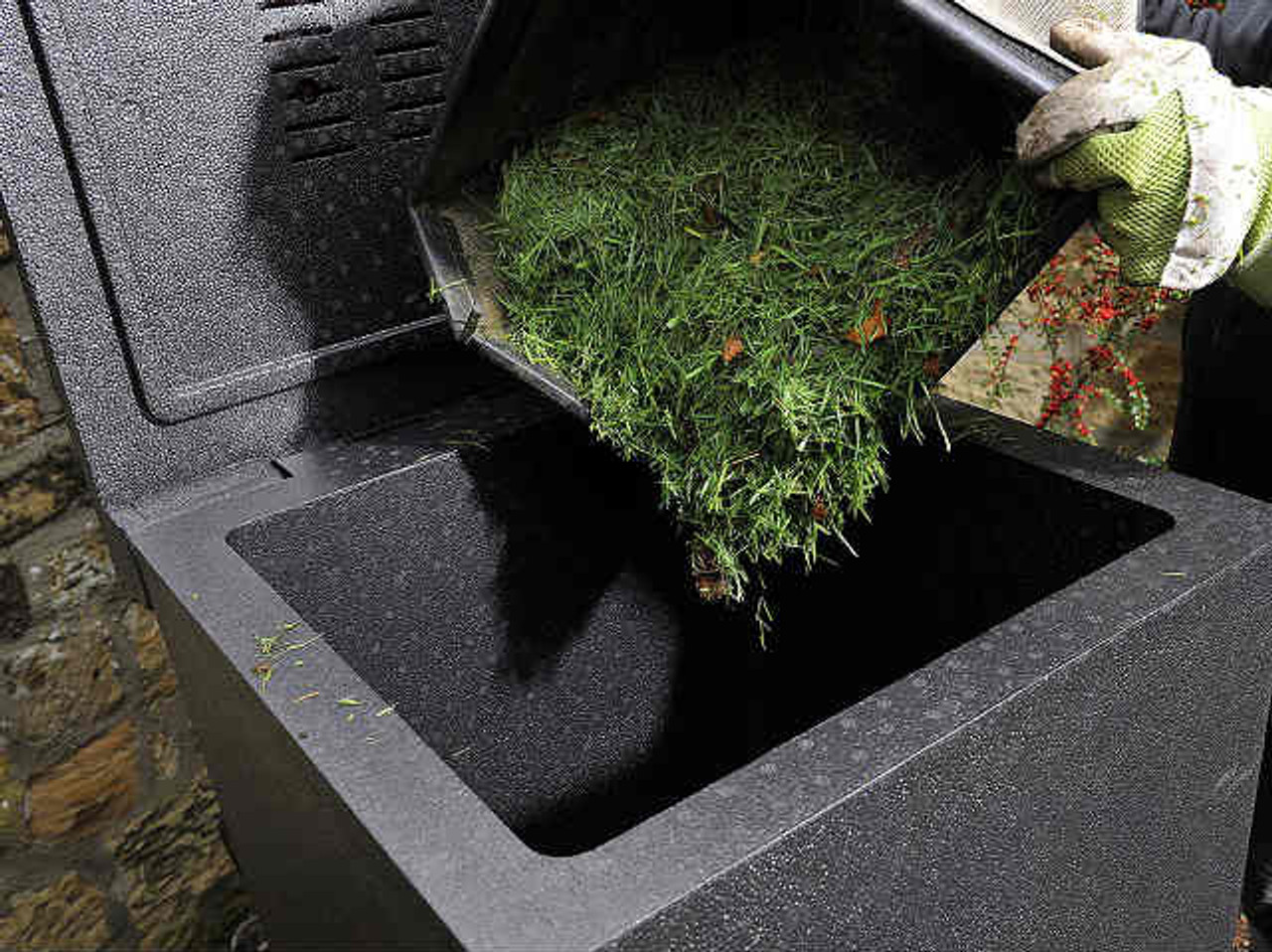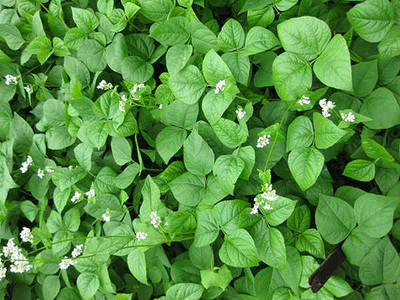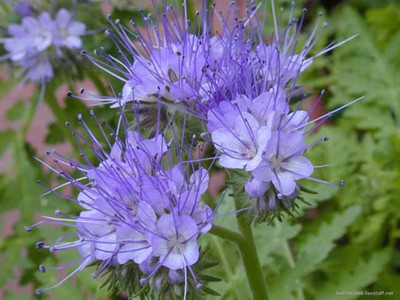What are Green Manures?

As my garden moves into autumn and I harvest and clear spent crops from my beds, I am looking at an increasing number of empty spaces. Some of these gaps will be filled with autumn or overwintering crops, but others will not be replanted with a food crop until the following spring.
The Importance of Covering Bare Soil
It is important to remember that bare soil degrades relatively quickly. There are no live roots to mop up soluble nutrients or preserve the soil structure. Prolonged periods of rain (sound familiar?) will wash nutrients from the soil and cause compaction as air is driven out by water. So it's important to protect the soil in one way or another.
How Can I Protect Bare Soil?
Beds can be covered for winter with layers of compost and (in areas with very wet winters) by a further layer of breathable ground cover sheeting. This is the method I usually employ, but I think I will modify my approach after learning more about green manure.

September in the Vegetable Garden - Feeding and Protecting Your Soil
Related ArticlePart of the reason is my gardening lapse last year when I had let some of my beds get overtaken by weeds in autumn - and had then left the weeds to cover the soil over winter. When clearing the beds in spring, I was surprised by the number of earthworms in the rootzone of the weedy beds compared to the compost-covered beds.
The answer is obvious I suppose: the roots of a growing plant is part of a larger nutrient exchange system that includes earthworms, fungi and microorganisms. The roots are also a habitat, so it makes sense to preserve the natural order of things where possible.

I say 'where possible' because, depending on when crops are being harvested, time may not be on your side. Green manures need time to get established and provide their benefits before the weather gets too cold.
I know I will be mixing both methods this year: covering some beds with compost and sowing green manures in others. I may even cover green manure beds with compost in mid winter so I have beds ready to go in spring. There will be some experimentation which I will keep you posted on here. Experimentation is always fun!

Hotbin Composter - Hot Compost Bin 200 Litres
View ProductWhat are Green Manures?
Green manures are crops sown to cover bare soil after your growing season crops have been harvested. The term 'green manure' can be confusing, as most people will initially think of animal manure. However green manure refers to a range of plants grown to feed your soil rather than your family.
A green manure crop will benefit the soil by providing cover to suppress weeds. It will store soluble nutrients, preventing them from being washed out by rain, and in some cases (field beans and clover) will actually add nutrients such as nitrogen to the soil.

A patch of lovely weed-free soil can look great to the vegetable grower, as it is usually the end result of some hard work in preparation for sowing. Remember though that bare soil needs to be covered to protect it from the elements.
If a follow-on crop isn't planned after harvesting (likely in autumn), it is important to cover the ground to prevent nutrients from being lost and the area becoming colonised with weeds.

Green Manure Phacelia Tanacetifolia 75g
View ProductWhat are the Benefits of Green Manures?
- Weed Control: A bare patch of soil will quickly become colonised by weeds. While the weeds will cover and protect the ground, they will also produce and drop seeds, making it difficult to get rid of them when it's time to sow. A dense cover crop of green manure will out-compete the weeds, and can be easily dug when the space is needed for a new crop.
- Protect Soil Structure: By covering the vulnerable soil surface you protect the soil structure from heavy rain. Soil is made up of different size particles which can be separated by rain washing through the soil and can result in impenetrable layers or 'pans'.

Green Manure Clover - Rozeta [50g]
View Product- Loosen the Soil: Deep-rooting green manures can help to loosen and aerate the soil deep into the ground, improving drainage and water infiltration.
- Improve Soil Fertility: Green manure crops that are also members of the Legume family take atmospheric nitrogen from the air and process it into a form usable by plants. This is done by beneficial bacteria living in root nodules in the plant's roots. When the plant is cut, the roots break down in the soil and release the nitrogen. Green manures also add organic matter as they break down, improving nutrient availability and supporting a healthy population of beneficial microbial life.

- Lock Up Soil Fertility: Soluble nutrients are washed through bare soil, particularly over the winter when heavy rain is more likely. Cover crops of green manure need nutrients to grow which are stored in the plant's cells. These nutrients are released when crops die back or are cut and dug into the soil.
- Rest Period for Soil: Soil which has been intensively worked may need time to recover its structure and fertility. Sowing green manure is an excellent way of protecting the soil over the recovery period, with all the benefits mentioned above. Clover is a particularly good crop for resting soil, as it fixes nitrogen and needs to be in the ground for a full season to be beneficial.
Sowing Green Manures
Green Manures are best sown on a weed-free plot, so hoe well before sowing. If you have time you can employ the 'Stale Seed Bed' technique:
- Hoe the area and leave it for 10 days or so to allow any weed seeds to germinate.
- Hoe again and rake off weeds
- Sow your green manure
- The idea is that you will have hoed off 2 generations of weeds, and should be left with a relatively clear patch of soil.

Broadcast sow (scatter) the seeds around the area you wish to cover at the approximate amounts recommended on the pack. The seeds are then raked into the soil and left to germinate.
Digging in Green Manures
Most green manures are best cut down before flowering. This is done to prevent the crop setting seed and becoming a nuisance later on. Plant stems also become tougher and more woody in the flower stages, so take longer to break down. Younger, more tender stems will be incorporated into your soil quicker and with less waste.

The best method is to mow or strim the crop a week or two before you want to dig it into the soil to allow it to break down a little. If you are following a no-dig regime, you can leave the mowings on the surface of the soil as a mulch and allow them to break down naturally.
I like to grow a bulky nitrogen-fixing crop like field beans in early autumn. I cut them down and add a heavy mulch of compost on top, before covering the whole lot with seaweed and/or black plastic for the Winter. I am located in the very wet North West of Ireland so need a little extra protection from the elements!

Green Manure - Field Bean Seeds
View ProductGreen Manure Options
There are a broad range of manures you can sow depending on the time of year. As already mentioned, clover needs a long growing season so is best sown earlier in the year (after new potatoes in July is an ideal time). Crops like Field Beans, Winter Vetch and Phacelia can be sown later in the year.
Rye grasses are often used, but I tend to avoid them as they can be a problem getting rid of the following year. Rye also releases a chemical that inhibits seed germination. Therefore if growing rye, wait at least a month after digging in before sowing a new crop.
Here's a list of our favourite green manure crops:

1. Clover
Clover is a handy fast-growing green manure which is an effective nitrogen fixer, so it's perfect for adding some 'va va voom' to your garden soil. It provides very good ground cover which helps smother weeds, and it has an extensive root system which prevents nutrients leaching out over wet winters.
Clover can also be sown as a weed cover around members of the brassica (cabbage) family, where the nitrogen in the roots feed the cabbage. You may need to trim the clover once or twice in the season to prevent it competing with your cabbages.

Green Manure Clover Mix CM01
View ProductClover can be sown between April and September, with an early sowing being best for good ground cover over the winter. Clear ground of weeds before sowing, as clover is a poor competitor with weeds in the early stages.
Once established it will form a mat of bulky foliage which keeps weeds at bay. Follow with greedy, nitrogen-loving plants like cabbage, kale and broccoli. The flowers are attractive to beneficial insects like bees and ladybirds, which in turn help pollination and insect control in the vegetable garden.

2. Phacelia Tanacetifolia
Pretty Phacelia is a very quick-growing annual green manure that can be sown successfully from March until September. The plant grows up to 1m in height and is tolerant of cold temperatures, so should survive the winter if it's not too severe.
Phacelia is particularly good at smothering weeds, and it has an extensive root system which improves soil structure. It will self seed easily, so if using it as a green manure it's a good idea to dig it in before it flowers.
If you are covering a spare patch of ground for a longer length of time let it flower: they really are beautiful. Flowers will appear 6-8 weeks after sowing, and will remain in bloom for 6-8 weeks more.
Phacelia is an excellent flower for attracting honeybees and hoverflies. it can be sown near the vegetable garden to attract these beneficial insects and help keep your aphid population under control.

3. Field Beans
Field beans are an excellent overwintering green manure which are usually winter hardy in temperate climates (unless it's a very cold winter). It germinates easily in the cooler weather from September to early November, but can be sown earlier if you wish.
Overall, a very popular choice and a perfect green manure if you're growing cabbage, kale, brussels sprouts and any other green leafy crops. You can either cut the plants down in the spring and dig in, or cut down and re-grow if you're not ready to cultivate your plot.

Stainless Steel Digging Spade from Burgon & Ball
View ProductIt is best to dig in before flowering: about 3-4 weeks before the new season's planting. It will not tolerate drought conditions - so not a big issue in Ireland these days!
4. Winter Vetch or Winter Tares
Also known as Winter Tares, Vetch can be sown anytime from March to September. It fixes nitrogen and can be mixed with other green manures. The plant establishes quickly, suppressing weeds as it quickly forms a dense ground-cover foliage.

Nitrogen is stored in the roots, which should be dug in with the rest of the plant in the spring. Follow with nitrogen-loving crops like leafy greens and members of the Brassica family. Cut down or hoe the crop down (this is best done before flowering, when stems are softer and break down quicker) before digging in the whole plant 4-6 weeks before the ground is to be used.
Like rye grass, vetch also inhibits seed germination so make sure you stick to the 4-6 weeks. This is only an issue for seeds, so planting seedling plants straight after digging is fine. Sow seed at approximately 16g per square meter. Scatter on the surface of the soil, then rake in and tramp down.

Green Manure Winter Vetch (Tares)
View ProductVetch is a member of the legume family, so should be rotated with other members of that family. Vetch doesn't like acidic soils so choose another crop if this is an issue in your garden.
5. Buckwheat
Buckwheat is a quick-growing green manure ideal for covering the soil in summer/autumn. It's attractive to beneficial insects in addition to its green manuring value.

Buckwheat germinates in 3 or 4 days, and produces a dense canopy of foliage that soon smothers and out-competes weeds. It rapidly decomposes to improve soil structure and add valuable organic matter. It works best if you dig it in while young, before tough woody stems are formed: the latter will take longer to break down.
- Make sure to dig in before it goes to seed, as it re-seeds very easily and can become a bit of a pest.
- Clear the area of weeds (especially perennials), and rake soil to a fine tilth.
- Broadcast sow the seed and rake in to a depth of 1cm. It can also be sown in rows 20cm apart.
- Firm the soil and gently water. Keep moist until seed has germinated.
Buckwheat grows well on poor soils, and is tolerant of acidic conditions.

Green Manure Buckwheat
View Product6. White Mustard
White Mustard is one of the quicker growing manures and can be sown between March and September. This annual is half hardy and is happy in most soil types. Its main benefit is the production of large amounts of stems and foliage - very good if your garden soil is lacking in organic matter.
The plants reach maturity after 4-8 weeks growth, when they should be chopped and dug into the first few inches of your soil. Let the mustard plants reach about 40 cm when the first flowers appear before digging in. Remember mustard is part of the brassica family and should be included in the brassica rotation to avoid diseases like club root and other related diseases.
Interestingly, mustard can be used to clear clubroot from a vegetable patch from repeated sowings. The idea is that - being a brassica - it will activate the clubroot spores; the plant is then dug before maturity which therefore breaks the lifecycle of this disease. Club root can remain dormant in your soil for up to 20 years so this is good news if you have it. This method will take a while on account of the repeated sowings, but it's a satisfyingly organic way of combating this tricky condition.




